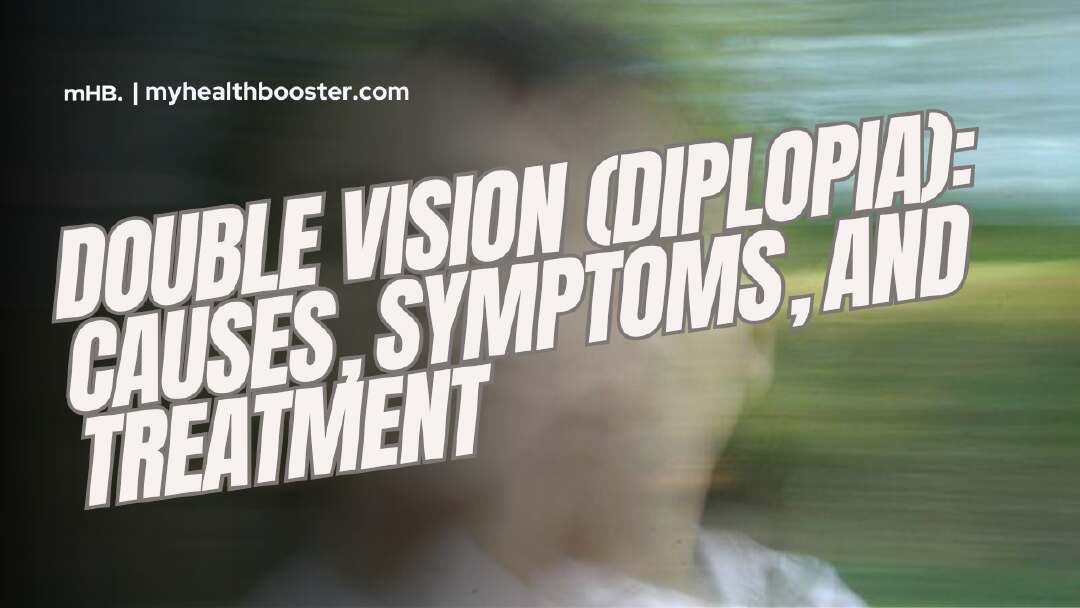Double vision (diplopia), can be a disconcerting visual phenomenon with various underlying causes. This article provides insights into the nature of double vision, its causes, symptoms, and the diverse approaches to its treatment.
What is Double Vision (Diplopia)?
Double vision, scientifically known as diplopia, refers to the perception of two images of a single object. This visual anomaly can manifest horizontally, vertically, or obliquely, with the medical term for perceiving three or more images being polyplopia.
Types of Double Vision (Diplopia)
- Monocular Diplopia: Occurs when one eye sees multiple images during an individual test. Often linked to poor focusing of light, as seen in refractive errors, dry eye, cataracts, and corneal irregularities.
- Binocular Diplopia: Presents a double image only when both eyes are open. Caused by a misalignment of the eyes, potentially signifying severe conditions such as aneurysms, strokes, or trauma affecting eye movement control.
Common Causes of Double Vision (Diplopia)
- Refractive Errors: Myopia, hyperopia, and astigmatism.
- Dry Eye: Resulting from meibomitis, Sjögren’s syndrome, or decreased tear production.
- Cataracts: Clouding of the natural lens, common in individuals over 60.
- Neurological Conditions: Aneurysms, strokes, trauma, and increased intracranial pressure affecting eye movement control.
- Diseases Affecting Nervous System: Multiple sclerosis, Guillain-Barré syndrome, migraine headaches, and myasthenia gravis.
- Eye Muscle Damage: Graves’ disease, orbital inflammations, and vascular diseases.
- Childhood Strabismus: Misalignment of eyes in children, potentially leading to amblyopia.
Symptoms and Signs
- Overlap or Adjacent Images: Objects may appear adjacent or overlapping.
- Variable Double Vision: Can be constant or fluctuate, influenced by factors such as fatigue.
- Associated Symptoms: Blurred vision, dizziness, headache, nausea, and weight loss.
Diagnosis by Healthcare Professionals
- Thorough Evaluation: Detailed history, assessing onset, duration, frequency, and associated symptoms.
- Physical Examination: Measurement of visual acuity, assessment of eye alignment, and complete eye examination.
- Specialized Tests: Imaging (topography, CT, MRI) if needed to investigate specific causes.
Treatment Approaches
- Corrective Lenses: Glasses or contact lenses for refractive errors.
- Medical Interventions: Artificial tears, anti-inflammatory drops, and surgical procedures for various eye conditions.
- Neurological Conditions: Urgent or emergent treatment for life- or vision-threatening causes.
- Underlying Disease Treatment: Addressing conditions like diabetes to improve blood supply to nerves.
- Surgery: Muscle or tissue surgery for cases of scarring or entrapment.
Prognosis
- Dependent on Underlying Cause: Prognosis varies based on the specific condition causing double vision.
- Resolution with Treatment: Many cases may subside with appropriate treatment.
- Permanent Misalignment: In some instances, permanent misalignment may occur due to nerve or muscle damage.
Prevention of Double Vision (Diplopia)
- Addressing Underlying Causes: Prevention strategies depend on the specific underlying cause.
- Regular Eye Check-ups: Routine eye examinations can help identify and address potential issues early.
Summary
Understanding the intricacies of double vision involves recognizing its types, causes, and the diverse array of treatment options. Timely diagnosis and appropriate interventions can significantly improve outcomes, emphasizing the importance of regular eye check-ups and prompt medical attention for any visual abnormalities.
